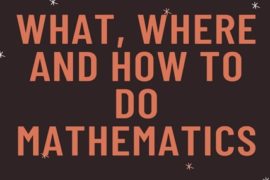Over the last year, I’ve come across lots of great math-related videos, and now that my blog is up and book is out, people are sending me links to many more. I thought Fridays would be a great time to share them. So, welcome to the first edition of Film Fridays!
Today’s little clip comes courtesy of my mother-in-law, who majored in math and then went on to have a seriously incredible career as a sales representative for American Greetings. She uses math like it’s a second language — no big deal, thankyouverymuch. (She also makes the most amazing pies ever.)
Still, this clip is a bit geeky — as many math videos are. What I encourage you to do, though, is find the artistry and magic. There will be no quiz. This is just for fun. (Details are below the clip.)
So while this looks absolutely magical, it really does boil down to some very simple math. The length of the pendulum determines how far it swings, and that in turn determines how many swings (or oscillations) it can complete in a given period of time. In plain English: a short pendulum swings faster than a long one. So the smarty-pants at Harvard built this pendulum based on the design of University of Maryland physics professor, Richard Berg. Here’s the nitty gritty, if you’re interested:
The period of one complete cycle of the dance is 60 seconds. The length of the longest pendulum has been adjusted so that it executes 51 oscillations in this 60 second period. The length of each successive shorter pendulum is carefully adjusted so that it executes one additional oscillation in this period. Thus, the 15th pendulum (shortest) undergoes 65 oscillations.
In other words: Pretty.
I am so excited to show you more videos! I especially can’t wait to introduce you to Vi Hart, who does the most captivating math doodles you can imagine. (Wait a minute, who else does math doodles?) So check in next week. And if you have a video that you want to share, please send me the link: llaing-at-comcast-dot-net.







Comments are closed.